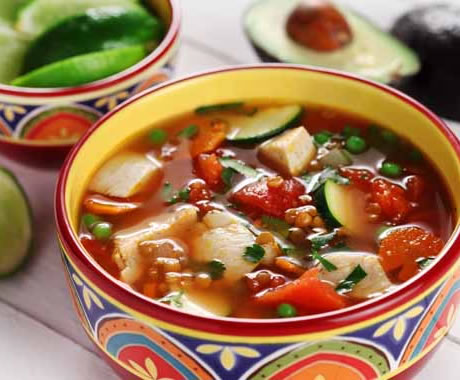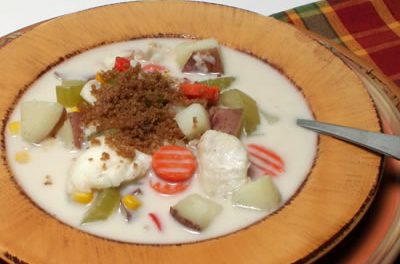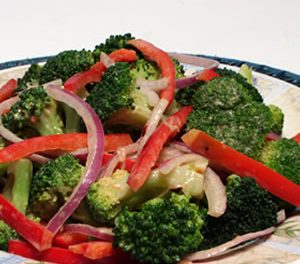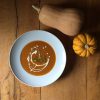Learn how to make smart choices with protein foods, how to vary your protein choices, what to look for on the food label and more.
All foods made from meat, poultry, seafood, beans and peas, eggs, processed soy products, nuts, and seeds are considered part of the Protein Foods Group.
Beans and peas are also part of the Vegetable Group. They are excellent sources of plant protein, and also provide other nutrients such as iron and zinc.
Select a variety of protein foods to improve nutrient intake and health benefits, including at least 8 ounces of cooked seafood per week. Young children need less, depending on their age and calorie needs. Meat and poultry choices should be lean or low-fat.
Start with a lean choice
- The leanest beef cuts include round steaks and roasts (eye of round, top round, bottom round, round tip), top loin, top sirloin, and chuck shoulder and arm roasts.
- The leanest pork choices include pork loin, tenderloin, center loin, and ham.
- Choose extra lean ground beef. The label should say at least “90% lean.” You may be able to find ground beef that is 93% or 95% lean.
- Buy skinless chicken parts, or take off the skin before cooking.
- Boneless skinless chicken breasts and turkey cutlets are the leanest poultry choices.
- Choose lean turkey, roast beef, ham, or low-fat luncheon meats for sandwiches instead of luncheon/deli meats with more fat, such as regular bologna or salami.
Keep it lean
- Trim away all of the visible fat from meats and poultry before cooking.
- Broil, grill, roast, poach, or boil meat, poultry, or fish instead of frying.
- Drain off any fat that appears during cooking.
- Skip or limit the breading on meat, poultry, or fish. Breading adds calories. It will also cause the food to soak up more fat during frying.
- Prepare beans and peas without added fats.
- Choose and prepare foods without high fat sauces or gravies.
Vary Your Protein Choices
Choose seafood at least twice a week as the main protein food (Seafood Recipes). Look for seafood rich in omega-3 fatty acids, such as salmon, trout, and herring. Some ideas are:
- Salmon steak or filet
- Salmon loaf
- Grilled or baked trout
Choose beans, peas, or soy products as a main dish or part of a meal often. Some choices are:
- Chili with kidney or pinto beans
- Stir- fried tofu
- Split pea, lentil, minestrone, or white bean soups
- Baked beans
- Black bean enchiladas
- Garbanzo or kidney beans on a chef’s salad
- Rice and beans
- Veggie burgers
- Hummus (chickpeas) spread on pita bread
Choose unsalted nuts as a snack, on salads, or in main dishes. Use nuts to replace meat or poultry, not in addition to these items:
- Use pine nuts in pesto sauce for pasta.
- Add slivered almonds to steamed vegetables.
- Add toasted peanuts or cashews to a vegetable stir fry instead of meat.
- Sprinkle a few nuts on top of low-fat ice cream or frozen yogurt.
- Add walnuts or pecans to a green salad instead of cheese or meat.
What to Look for on the Food Label
Download "Use the Nutrition Facts Label to Eat Healthier" for tips about the saturated fat, trans fat, cholesterol, and sodium content of packaged foods.
- Processed meats such as hams, sausages, frankfurters, and luncheon or deli meats have added sodium. Check the ingredient and Nutrition Facts label to help limit sodium intake.
- Fresh chicken, turkey, and pork that have been enhanced with a salt-containing solution also have added sodium. Check the product label for statements such as “self-basting” or “contains up to __% of __.”
- Lower fat versions of many processed meats are available. Look on the Nutrition Facts label to choose products with less fat and saturated fat.
Keeping It Safe to Eat
- Separate raw, cooked and ready-to-eat foods.
- Do not wash or rinse meat or poultry.
- Wash cutting boards, knives, utensils and counter tops in hot soapy water after preparing each food item and before going on to the next one.
- Store raw meat, poultry and seafood on the bottom shelf of the refrigerator so juices don’t drip onto other foods.
- Cook foods to a safe temperature to kill microorganisms. Use a meat thermometer, which measures the internal temperature of cooked meat and poultry, to make sure that the meat is cooked all the way through.
- Chill (refrigerate) perishable food promptly and defrost foods properly. Refrigerate or freeze perishables, prepared food and leftovers within two hours.
- Plan ahead to defrost foods. Never defrost food on the kitchen counter at room temperature. Thaw food by placing it in the refrigerator, submerging air-tight packaged food in cold tap water (change water every 30 minutes), or defrosting on a plate in the microwave.
- Avoid raw or partially cooked eggs or foods containing raw eggs and raw or undercooked meat and poultry.
- Women who may become pregnant, pregnant women, nursing mothers, and young children should avoid some types of fish and eat types lower in mercury. Call 1‑888‑SAFEFOOD for more information.
What's in the photo above? Sopa De Pollo a la Mexicana












